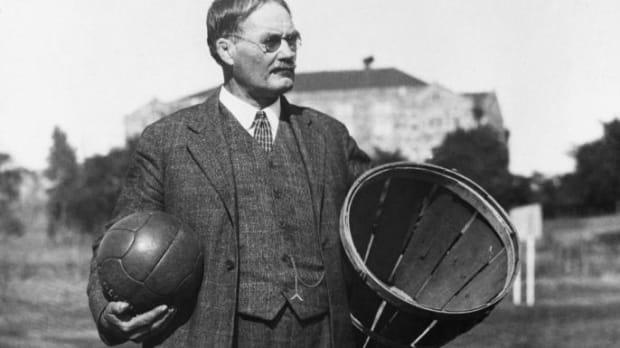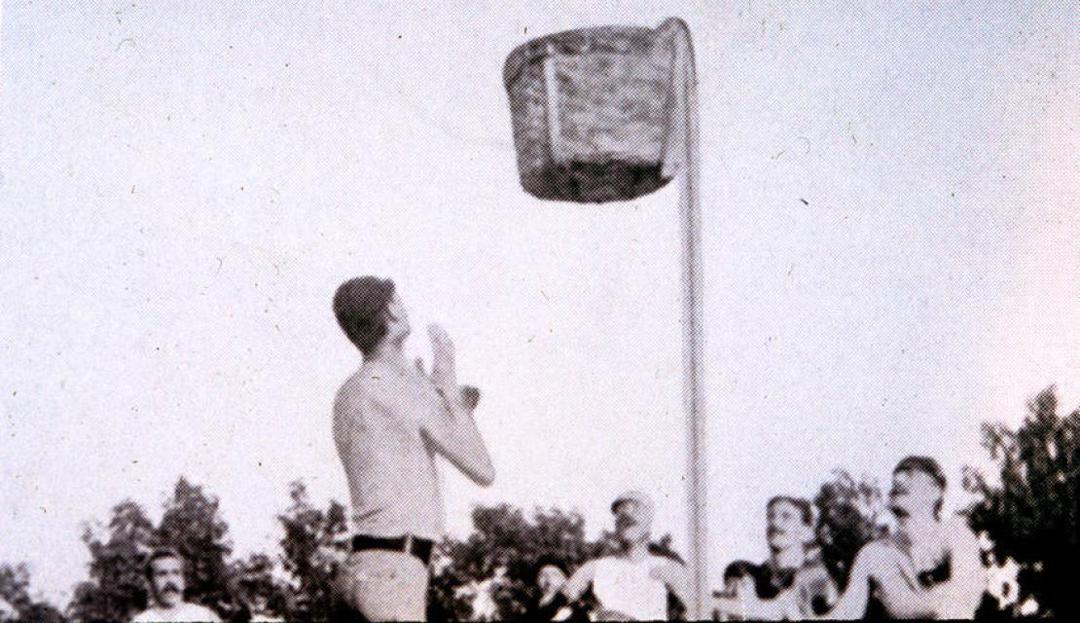It was the winter of 1891-1892. Inside a gymnasium at Springfield College (then known as the International YMCA Training School), located in Springfield, Mass., was a group of restless college students.
The young men had to be there; they were required to participate in indoor activities to burn off the energy that had been building up since their football season ended.
The gymnasium class offered them activities such as marching, calisthenics, and apparatus work, but these were pale substitutes for the more exciting games of football and lacrosse they played in warmer seasons.
The person who invented Basketball
The instructor of this class was James Naismith, a 31-year-old graduate student. After graduating from Presbyterian College in Montreal with a theology degree, Naismith embraced his love of athletics and headed to Springfield to study physical education—at that time, a relatively new and unknown academic discipline—under Luther Halsey Gulick, superintendent of physical education at the College and today renowned as the father of physical education and recreation in the United States.
As Naismith, a second-year graduate student who had been named to the teaching faculty, looked at his class, his mind flashed to the summer session of 1891, when Gulick introduced a new course in the psychology of play.
In class discussions, Gulick had stressed the need for a new indoor game, one “that would be interesting, easy to learn, and easy to play in the winter and by artificial light.”
No one in the class had followed up on Gulick’s challenge to invent such a game. But now, faced with the end of the fall sports season and students dreading the mandatory and dull required gymnasium work, Naismith had a new motivation.
Two instructors had already tried and failed to devise activities that would interest the young men. The faculty had met to discuss what was becoming a persistent problem with the class’s unbridled energy and disinterest in required work.
During the meeting, Naismith later wrote that he had expressed his opinion that “the trouble is not with the men, but with the system that we are using.”
He felt that the kind of work needed to motivate and inspire the young men he faced “should be of a recreative nature, something that would appeal to their play instincts.”
Before the end of the faculty meeting, Gulick placed the problem squarely in Naismith’s lap.
“Naismith,” he said. “I want you to take that class and see what you can do with it.”
So Naismith went to work. His charge was to create a game that was easy to assimilate, yet complex enough to be interesting. It had to be playable indoors or on any kind of ground, and by a large number of players all at once.
It should provide plenty of exercise, yet without the roughness of football, soccer, or rugby since those would threaten bruises and broken bones if played in a confined space.
Much time and thought went into this new creation. It became an adaptation of many games of its time, including American rugby (passing), English rugby (the jump ball), lacrosse (use of a goal), soccer (the shape and size of the ball), and something called duck on a rock, a game Naismith had played with his childhood friends in Bennie’s Corners, Ontario. Duck on a rock used a ball and a goal that could not be rushed.
The goal could not be slammed through, thus necessitating “a goal with a horizontal opening high enough so that the ball would have to be tossed into it, rather than being thrown.”
Naismith approached the school janitor, hoping he could find two, 18-inch square boxes to use as goals. The janitor came back with two peach baskets instead. Naismith then nailed them to the lower rail of the gymnasium balcony, one at each end.
The height of that lower balcony rail happened to be ten feet. A man was stationed at each end of the balcony to pick the ball from the basket and put it back into play. It wasn’t until a few years later that the bottoms of those peach baskets were cut to let the ball fall loose.
Naismith then drew up the 13 original rules, which described, among other facets, the method of moving the ball and what constituted a foul.
A referee was appointed. The game would be divided into two, 15-minute halves with a five-minute resting period in between.
Naismith’s secretary typed up the rules and tacked them on the bulletin board. A short time later, the gym class met, and the teams were chosen with three centers, three forwards, and three guards per side. Two of the centers met at mid-court, Naismith tossed the ball, and the game of “basket ball” was born.
An early outdoor basketball game using a peach basket is played at Springfield College.
The year Basketball was invented
Word of the new game spread like wildfire. It was an instant success. A few weeks after the game was invented, students introduced the game at their own YMCAs.
The rules were printed in a College magazine, which was mailed to YMCAs around the country.
Because of the College’s well-represented international student body, the game of basketball was introduced to many foreign nations in a relatively short period of time. High schools and colleges began to introduce the new game, and by 1905, basketball was officially recognized as a permanent winter sport




































































